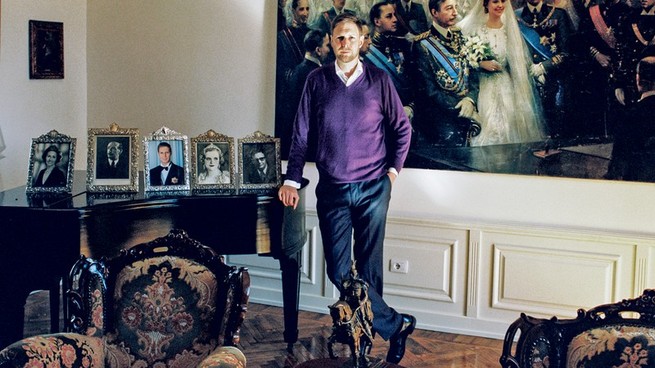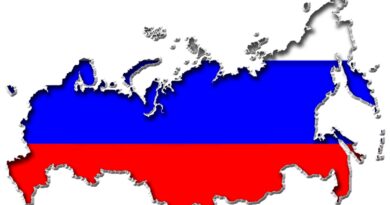Four Possibilities for the Kremlin Drone Attack
This is an edition of The Atlantic Daily, a newsletter that guides you through the biggest stories of the day, helps you discover new ideas, and recommends the best in culture. Sign up for it here.
Two drones struck inside the Kremlin complex early this morning. We don’t know exactly what happened, but the Russian claims of a Ukrainian attack are doubtful. Russia may now have a domestic-terrorist problem—but it’s more likely that Vladimir Putin’s regime is preparing an excuse for a new escalation.
First, here are three new stories from The Atlantic:
A Possible False Flag
Here’s what we know: Early this morning, two drones struck inside the Kremlin (which is actually a walled complex that surrounds several government buildings and ancient churches and palaces). The New York Times has verified three videos, two of which appear to show “a drone flying toward and exploding over the Kremlin Senate,” which houses the president’s executive office, and the other showing the dome of the Senate building on fire.
That’s as much as we know. The Russians, of course, are blaming the Ukrainians, and claiming that the strike was an attempt to kill Russian President Vladimir Putin, who at the time was at his compound in the Moscow suburb of Novo-Ogarevo, Russian officials said. Ukrainian President Volodymyr Zelensky denied this charge and specifically denied targeting Putin: “We don’t attack Putin or Moscow,” he said during his visit to Finland. “We fight on our territory.”
But who would (or could) launch such an attack? I see four possibilities in ascending order of likelihood—with the caveat that I am drawing on jumbled and partial information, so treat this as a preliminary and tentative list.
First, it is possible that the Ukrainians or some Ukrainian team in Moscow could have used drones. But it is unlikely, because it doesn’t make much sense. An attack on the Kremlin might be an obvious symbolic move, but a demonstrative strike on an empty building at night would be a waste of already strained Ukrainian intelligence resources, and would likely annoy the Americans and NATO in the bargain. (Also, as one former U.S. defense official noted, the Ukrainians are pretty good at tracking Putin, and if reports of the event are accurate, they likely knew he wasn’t in the building.)
A second possibility is that Russian intelligence and military authorities got wind of a plot by some group to strike the Kremlin, and then let it happen as a way to goad Putin into using even more force in Ukraine. My friend Nick Gvosdev, a senior fellow at the Foreign Policy Research Institute, reminded me today that Russian spooks are not exactly averse to such cold-blooded moves: In 2002, terrorists took hostages at a theater in downtown Moscow, and he noted that there have been accusations over the years that the intelligence services knew it was coming and yet let it happen, as a means of strengthening possible demands for more power to deal with such events.
Still, this seems like an overly complicated explanation. The Russian army needs more “cannon meat,” to use the Russian expression, but even the Defense Ministry probably realizes that their campaigns to dragoon more men are reaching their limit. The intelligence services have been in hot water ever since they misled Putin about the chances of success in Ukraine, and they might want to use a bomb hitting the Kremlin to press their claims for more resources and power—but they also run the risk that a drone strike in the heart of the city would look like yet more evidence of their incompetence.
It is also possible that the strike on the Kremlin came from Russian dissidents, especially if it was done with some sort of crude, jerry-rigged device. Again, unlikely but not impossible, especially with social anger rising over waves of conscription that were supposed to take place out in the Russian boondocks and never touch Moscow and St. Petersburg. In this case, the intelligence services would have every incentive to blame Kyiv, because the only thing worse for them than failing to stop a hit from a Ukrainian commando team would be an assassination attempt by Russians right under their noses. Russia is already functionally a fascist state, and a plot to bomb the Kremlin and kill the president might well be the spur for the kind of iron-fisted mass repression Putin and his advisers have avoided until now.
But the most disturbing possibility is that this is a Russian government put-up job from start to finish. There are several reasons this makes more sense than other explanations.
First, an attack on the Kremlin would give Putin the rationalization he’s been seeking for some kind of dramatic and murderous action that might not make much military sense, but that would destabilize Ukraine and unsettle the world on the eve of a major Ukrainian counteroffensive. The Russians, I believe, are dreading this coming operation, and want to change the narrative at home and abroad. I have no idea what Putin has up his sleeve, but even on his better days, he is prone to strategically idiotic moves. He might try to drag Belarus into the war, he could make more nuclear threats, or he could even order redoubled efforts to kill Zelensky.
In any case, faking a drone attack would fit into the long-standing Russian affinity for “false flag” operations. Though conspiracy theorists in the United States often trumpet unfounded claims of false flags, professional intelligence services do conduct such operations, and Moscow has been particularly fond of them all the way back to the Soviet period. The series of apartment bombings in Russia in 1999, for example, that became the pretext for escalation in Chechnya, were almost certainly orchestrated by the secret services (a possibility so disturbing that I and other Russia experts were loath to accept it—but which is now, in my view, undeniable). And in the past year, the Russians warned that the Ukrainians were going to unleash a “dirty bomb,” a ludicrous claim that even led China to give the Kremlin some stink eye for playing around with nuclear threats.
This drone strike looks like the same play, only without nuclear materials. A terrorist attack in the capital would be a pretext for the Russians to warn the world that this time, they’re really going to take the gloves off. Ukrainian officials are worried that this is exactly the Russian plan. Mykhailo Podolyak, an adviser to Zelensky, told the BBC that the incident indicated Russia could be “preparing a large-scale terrorist provocation” in Ukraine. That’s a pretty chilling possibility, considering that the Russian campaign plan at this point already consists of indiscriminate war crimes.
“Something is happening” over the skies of the Russian Federation, Podolyak said, “but definitely without Ukraine’s drones over the Kremlin.” At this point, I agree, but we’ll soon know more—and we should brace for what’s coming from Russia’s desperate dictator.
Related:
Today’s News
- Francisco Oropeza, the man accused of shooting five people in Texas, was apprehended in Montgomery County.
- Sources close to the defamation lawsuit brought by Dominion Voting Systems against Fox News revealed the contents of a text message from Tucker Carlson, which is part of redacted court filings and shows his private views on race, to The New York Times. The discovery of the message by the Fox board of directors reportedly contributed to his firing.
- Representative Colin Allred, a Dallas-area Democrat, will challenge Ted Cruz for his Senate seat next year.
Dispatches:
- The Weekly Planet: Climate change is pumping the air with pollen, Yasmin Tayag writes. It’s a problem even for people who don’t think they’re allergic.
Evening Read

Among Europe’s Ex-Royals
One peculiarity of European aristocrats is that their names pile up, like snowdrifts. It’s lunchtime in Tirana, the capital of Albania, and I am about to meet Leka Anwar Zog Reza Baudouin Msiziwe Zogu, crown prince of the Albanians.
The Albanian royal residence is easy to miss, tucked away on a quiet side street behind the national art museum. While Buckingham Palace has 775 rooms, including 188 staff bedrooms, 19 staterooms, and 78 bathrooms, the Albanian residence would be among the smaller, more understated houses in a wealthy American suburb. Its front gate opens onto a yard where the country stores its unwanted Soviet statues: Lenin, Stalin, and the Albanian Communist leader Enver Hoxha all gaze with stony fortitude at a generic Stakhanovite maiden. Lenin has no arms. Hoxha’s nose is missing. The gate is guarded by an elderly manservant for whom the term faithful retainer might have been invented. Because I am British, his thinly disguised irritation at my presence makes me feel right at home.
More From The Atlantic
Culture Break

Read. “Nostrand and Lincoln,” a new poem by Janelle Tan.
“my friend who lives in a basement apartment / with no windows and no light / tells me it is all worth it / because of the people she’s met in this city.”
Watch. Guardians of the Galaxy Vol. 3 (in theaters this week). It features probably the only Marvel characters that staff writer David Sims still truly cares about.
P.S.
One of the most agonizing questions for those of us who began our careers as students of the old Soviet Union—and who were hopeful that Russia could become a normal country after 1991—is whether the whole project of Russian democracy was cursed and virtually impossible from the start. I have always resisted that conclusion; I think Russia was, in fact, a democracy, however flawed, even into Putin’s first term in office from 2000 to 2004. But by the time Putin returned to reclaim his throne for a third time after a short break (mandated at that point by the Russian constitution), Russia was already in something like democratic free fall. Did Putin change, or was he always just a gangster?
I remain unconvinced that everything that happened in Moscow was just a huge plot to doom democracy right from the early days of Russian independence, but good scholars should find the most convincing arguments against their own biases. The best case for the idea that Putin was always an authoritarian who intended to wreck Russian democracy can be found in a highly detailed book by the late Karen Dawisha titled Putin’s Kleptocracy, and I would recommend it to readers who want a history of Putin’s attack on Russian institutions. It is a work that has forced me—uncomfortably—to rethink many of my views, as dispiriting as that can sometimes be.
— Tom
Katherine Hu contributed to this newsletter.
This article has been archived for your research. The original version from The Atlantic can be found here.


